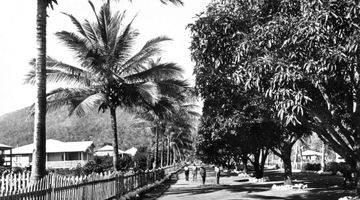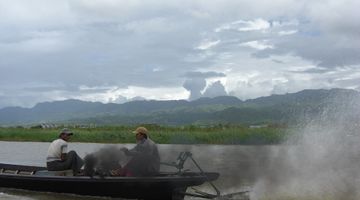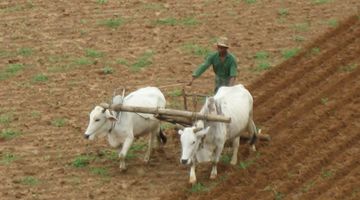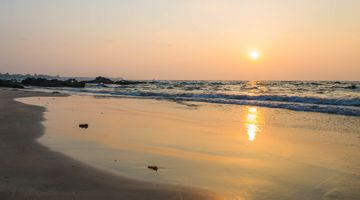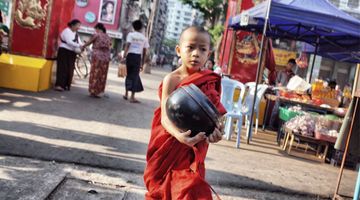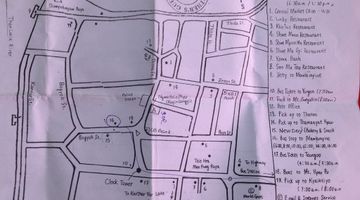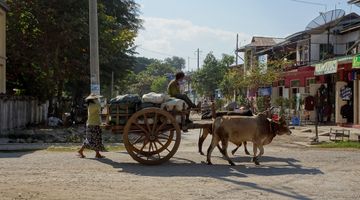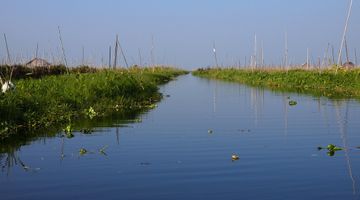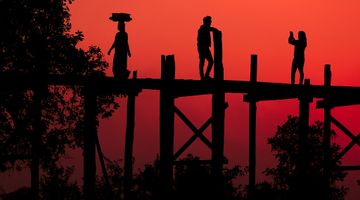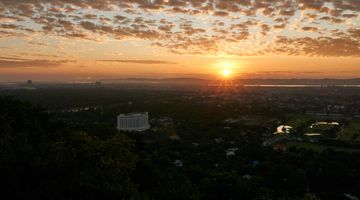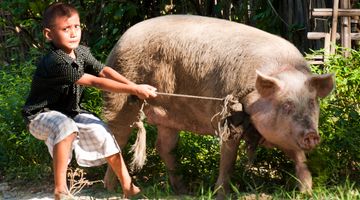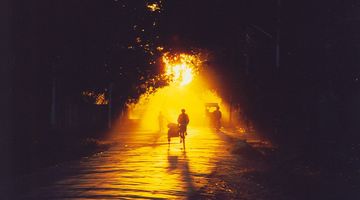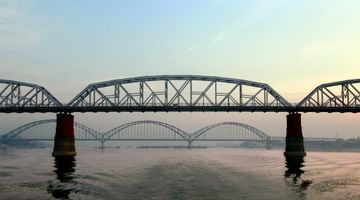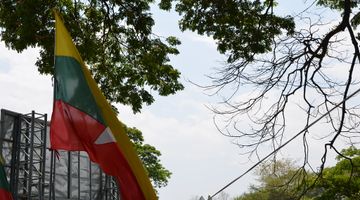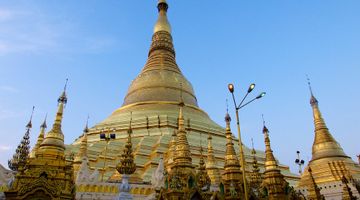15 Interesting Facts about Myanmar
Are you looking to find a few interesting and funny things about Myanmar before you visit? Learning some of the many Myanmar funny things gives you an insight into the culture and traditions of the country, which in turn will enhance your travel experience. Here are 15 fun facts about Myanmar any tourist should know before their trip.
1. Is it Myanmar or Burma?
The first thing tourists notice is that some people call the country Myanmar whereas others refer to it as Burma. This is strange and somewhat unique.
So what’s it all about?
Well, Burma was what the British called the country during their reign that lasted from 1824 to 1948. The name Burma is derived from the dominant Bamar ethnic group that makes up 70% of the population.
After gaining independence, the nation was ruled by a harsh regime under the military junta. In 1989, Burma officially became the Republic of the Union of Myanmar and Rangoon became Yangon. Many democratic governments didn’t recognise the junta's rule and therefore didn’t recognised the name change. They referred to its previous name instead.
In a nutshell, Burma is the old name and Myanmar is the new name.
2. The Myanmar Water festival
The Water Festival, also known as Thingyan, is one of the biggest festivals in the country. Thousands take to the streets for a huge water fight to celebrate the Burmese New Year in April. Everyone has a great time and it’s one of the most important facts about Myanmar culture you should be aware of as a tourist. Taking part is probably the best travel experience you can have here.
3. The longyi in Myanmar
The longyi is a traditional piece of clothing that both men and women wear throughout Myanmar. A large 2-metre cloth is wrapped around the bottom half of the body in a similar way to a sarong. People wear this for pretty much any occasions. You’ll see men wearing a shirt with a longyi as they go to the office and women lounging around in their shops in one.
The difference between the longyi for males and females is the pattern and how the knot is tied. Men allow their knot to hang out the front whereas women tuck it inside.
Tourists find this traditional attire intriguing and will often try it on for themselves, much to the amusement of the locals. But, you may have to wear one, especially if you’re dressed inappropriately to enter a religious building.
4. Myanmar still uses the imperial system
Very few countries measure things using the Imperial System. This means that they measure weight in pounds and distances in inches rather than the more common kilograms and centimetres. Only the United States and Liberia retain this system. Just be careful when you’re looking at the Myanmar facts and figures to make sure you get the right measurement!
5. The preferred method of carrying things is on the head
This is one of the more unusual facts about Myanmar that you’ll notice quite often when you're visiting and travelling in the country. People, especially women, tend to carry things on their heads rather than using their hands. Foreigners are shocked at first and automatically think back to the travel shows on Africa. But, carrying things on the head is quite popular and is a more convenient method of transport. You can expect to see vendors carrying food on a large metal plate or even a basket full of the weekly shopping on their heads.
6. The Kingdom of Pagan
In the 12th and 13th century, a large and powerful Kingdom flourished in the plains of central Myanmar. Kings built a succession of ancient temples and pagodas, which became a centre for Theravada Buddhism. This was also the birthplace of the dominance of Burmese culture and language in modern day Myanmar.
Visiting the temples in modern day Bagan is one of the top things people do when they visit the country. You can see more than 2000 religious monuments in a very tiny area and experience the best sunset of your life.
7. The new capital city that appeared overnight
In October 2005, Yangon was the bustling capital of Myanmar. A few weeks later, it was no longer the capital and the government staff suddenly found that they had to relocate almost 400 kilometres up the road to Naypyidaw. The government built the new city in secret and then announced that it was the new administrative centre.
8. How to get the waiters attention
Here is one of the more important cultural facts on Myanmar that tourists find surprising. Imagine that you’re sitting in a restaurant and want to attract the attention of the waiter.
What do you do?
Most people wave their hands or try to catch the waiter’s eye to call them over to the table.
Not in Myanmar.
The way that you do it here is by making a kissing sound two or three times in the direction of the person you’re calling. Back at home, this may seem extremely rude and likely to get a hard glare or a smack around the head. But, here it’s normal. Men will make kissing sounds towards other men to get their attention and that’s what you should do too. A top tip is to sit down for a few minutes and observe how others behave before you try it for yourself!
9. The red stains and betel leaves
Betel leaves are a mild stimulant that the locals like to chew on for a couple of minutes. Unfortunately, the leaves cause their mouths to water, which in turn is mixed with the red dye of the substance. People then spit this out onto the floor causing red stains along the street. The first impression when you see this ubiquitous marking on the floor may be blood. But, it’s not.
When you’re in Myanmar, you’ll see people chewing this and will become familiar with the red stains that line the streets. Vendors sell large green leaves containing the nut with spices and occasionally tobacco. Try it yourself if you dare.
10. The Shwedagon Pagoda is extremely valuable
The large pagoda in Yangon is iconic of Myanmar and attracts pilgrims from around the country. Tourists marvel at this giant, gold plated complex in the centre of the former capital. When you visit, you can understand why it’s so valuable. More than 60 tonnes of gold cover the exterior of the pagoda. And if you look up at the top of the main stupa that extends up into the sky, you’ll see a giant diamond sat inside the hti. This is a real 75 carat (or 15 gram), practically flawless diamond on top of the pagoda. And not to mention the thousands of others that decorate the statues and pavilions.
11. The Magic of thanaka
Anyone who visits Myanmar will notice people in the streets with what seems like mud smeared over their face. This is a little disconcerting at first but it’s nothing to worry about.
Actually, it’s a special mixture of powdered bark that comes from a particular tree. When it’s produced, locals wipe it on their face to act as protection against the sun. Some also say that it’s good for the skin and has anti-aging properties. When you’re in the country, try it for yourself and you can make up your own mind.
12. The joys of driving and crossing the roads in Myanmar
Myanmar was ruled by the British for more than a century and therefore adopted some of their customs and traditions. One of these is the style of driving. Just like their former colonial masters, early vehicles drove on the left.
The vast majority of other countries drive on the right.
Then just as abrupt as the capital moving to Naypyidaw, one day in 1970, the government announced that all cars will drive on the opposite side of the road. So now, the driving is on the right.
In theory, this may not sound like such a big deal when you remember this changed happened 40 years ago.
But in reality, it is a problem.
Roads and older vehicles were designed to drive on the left. Some bus stops are also on the left-hand side of the road. Now that cars drive on the right, it can cause a few problems and difficulties for pedestrians. Imagine running across a lane of traffic to get to the bus stop!
Newer vehicles are designed for right handed driving, but the older ones aren’t. This means you have a mixture of all kinds of vehicles and since people rarely follow the road laws, it creates chaos.
13. Come to Myanmar for a cultural experience
The country is home to more than 135 different ethnicities. If you look into the geography facts on Myanmar, you can see that a number of groups live in the different regions. Each has their own culture and traditions. You can find some with a special one legged rowing technique at Inle Lake and others wear heavy rings to stretch their necks. The main ethnic group, the Bamar, make up about 70% of the population.
Myanmar is a cultural melting pot of ethnicities. This can make it perfect for a cultural travel experience and gives you the chance to meet and interact with lots of different people.
14. Myanmar has a number of travel restrictions for tourists
Because of internal politics and civil unrest in some regions, large parts are off limits to tourists. This includes some of the more beautiful areas in Shan State and a number of smaller villages. You’re also faced with restrictions for religious purposes and to preserve the integrity of rural communities.
But, this shouldn’t stop you from wanting to visit. The typical tourist trail offers a wide variety of opportunities to experience all the history and culture that Myanmar has to offer including Yangon, Bagan, Mandalay, and Inle Lake. And you’ll have plenty of chances to get off the beaten track if that’s what you want to do.
15. Change your watch when you arrive
Travellers know the confusion when arriving in a country that’s in a different time zone. You tend to either gain or lose a few hours. Myanmar is a little different. Rather than adjusting their clock to correspond with the gain or loss of a whole hour, like most countries, they do it with 30-minute intervals. The official time zone is GMT +6.30. Very few countries in the world do it in this way making Myanmar somewhat unique.
Concluding remarks
Learning a few fun facts about a destination before visiting is a great way to enhance your travel experience. I hope you’ve enjoyed these 15 fun facts about Myanmar and can now go and wow your friends and family with your knowledge on Myanmar.
